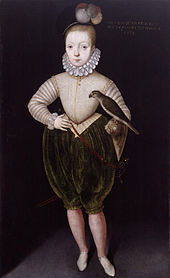| Francois II and his Queen Consort Marie (Mary Stewart) at their wedding when both were teenagers. |
The show is designed to create a sense of drama of which there is plenty in this story and a feeling for the richness of court life. Not a lot survives because the events recorded happened more than 400 years ago --but also because there was plenty of reason for those involved to destroy
| The Darnley Jewel |
evidence of the events that took place--and their connections with the Queen of Scotland --whether they were supporters or members of the cast that wanted to do her in. (She had a strong claim to succeeded Elizabeth I as Queen of England.) Still enough has survived for this to be a touching as well as dazzling display of furniture and books, maps and letters, embroiders. The hokey modern recreations of court dress are ghastly although some are bound to disagree. Mary was known to have had a magnificent collection of jewels. (On her death, Elizabeth I took her fabulous pearls.) One of the most fabulous objects in the show is the Darnley Jewel, above. It is a locket that opens to reveal even more wonderful enamelling and a white skull and cross bones at its center. The jewel which belonged to mother of Henry, Lord Darnely. It was given to the Queen of Scotland after she married Henry. She gave birth to a boy. James grew up to become.
 King James VI of Scotland and then King James I of England and Ireland.
King James VI of Scotland and then King James I of England and Ireland. . Elizabeth I saw off his mother but she failed to prevent a Stewart from ruling her country as well as his.
